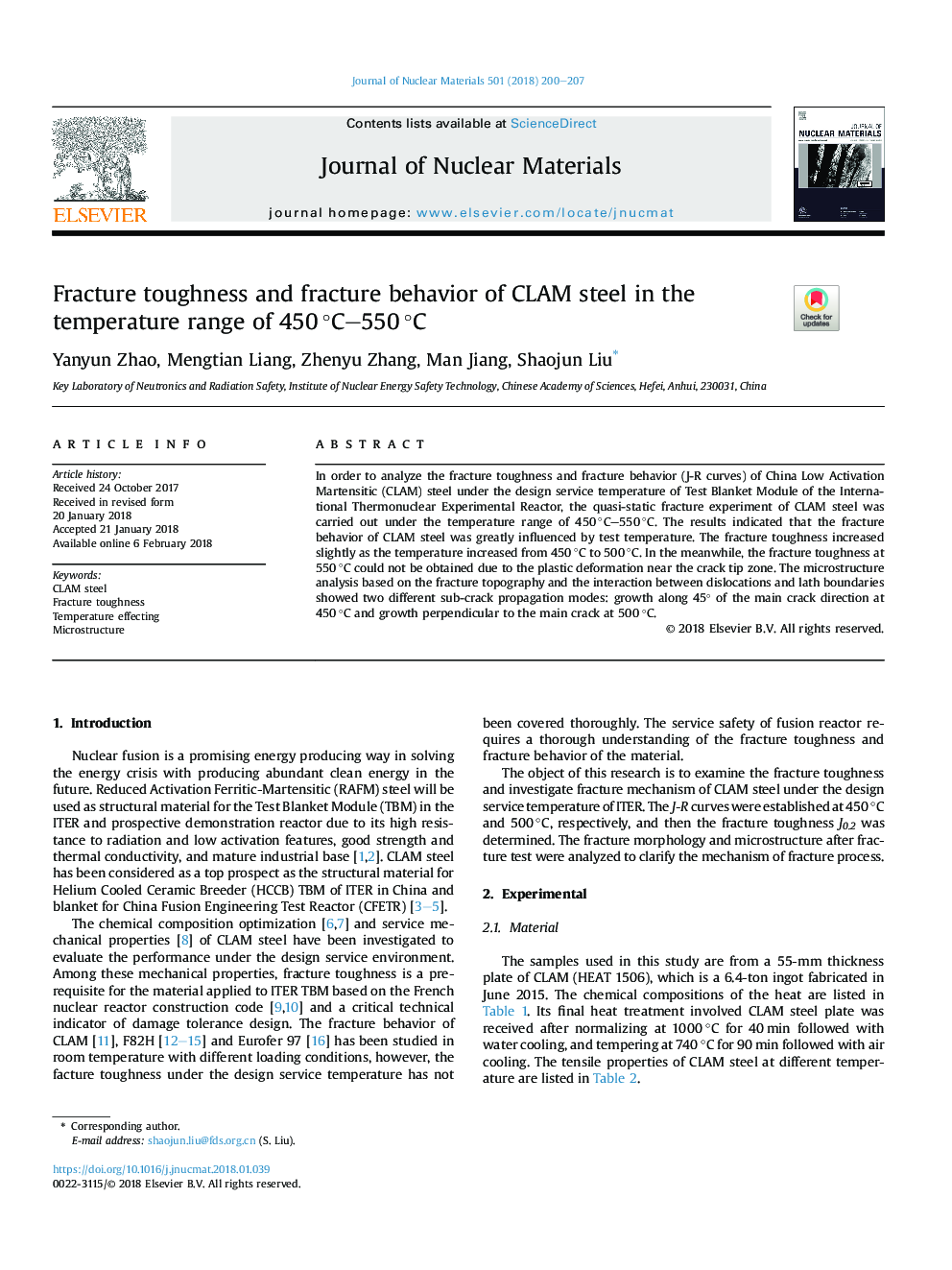| Article ID | Journal | Published Year | Pages | File Type |
|---|---|---|---|---|
| 7963362 | Journal of Nuclear Materials | 2018 | 8 Pages |
Abstract
In order to analyze the fracture toughness and fracture behavior (J-R curves) of China Low Activation Martensitic (CLAM) steel under the design service temperature of Test Blanket Module of the International Thermonuclear Experimental Reactor, the quasi-static fracture experiment of CLAM steel was carried out under the temperature range of 450â¯Â°C-550â¯Â°C. The results indicated that the fracture behavior of CLAM steel was greatly influenced by test temperature. The fracture toughness increased slightly as the temperature increased from 450â¯Â°C to 500â¯Â°C. In the meanwhile, the fracture toughness at 550â¯Â°C could not be obtained due to the plastic deformation near the crack tip zone. The microstructure analysis based on the fracture topography and the interaction between dislocations and lath boundaries showed two different sub-crack propagation modes: growth along 45° of the main crack direction at 450â¯Â°C and growth perpendicular to the main crack at 500â¯Â°C.
Related Topics
Physical Sciences and Engineering
Energy
Nuclear Energy and Engineering
Authors
Yanyun Zhao, Mengtian Liang, Zhenyu Zhang, Man Jiang, Shaojun Liu,
